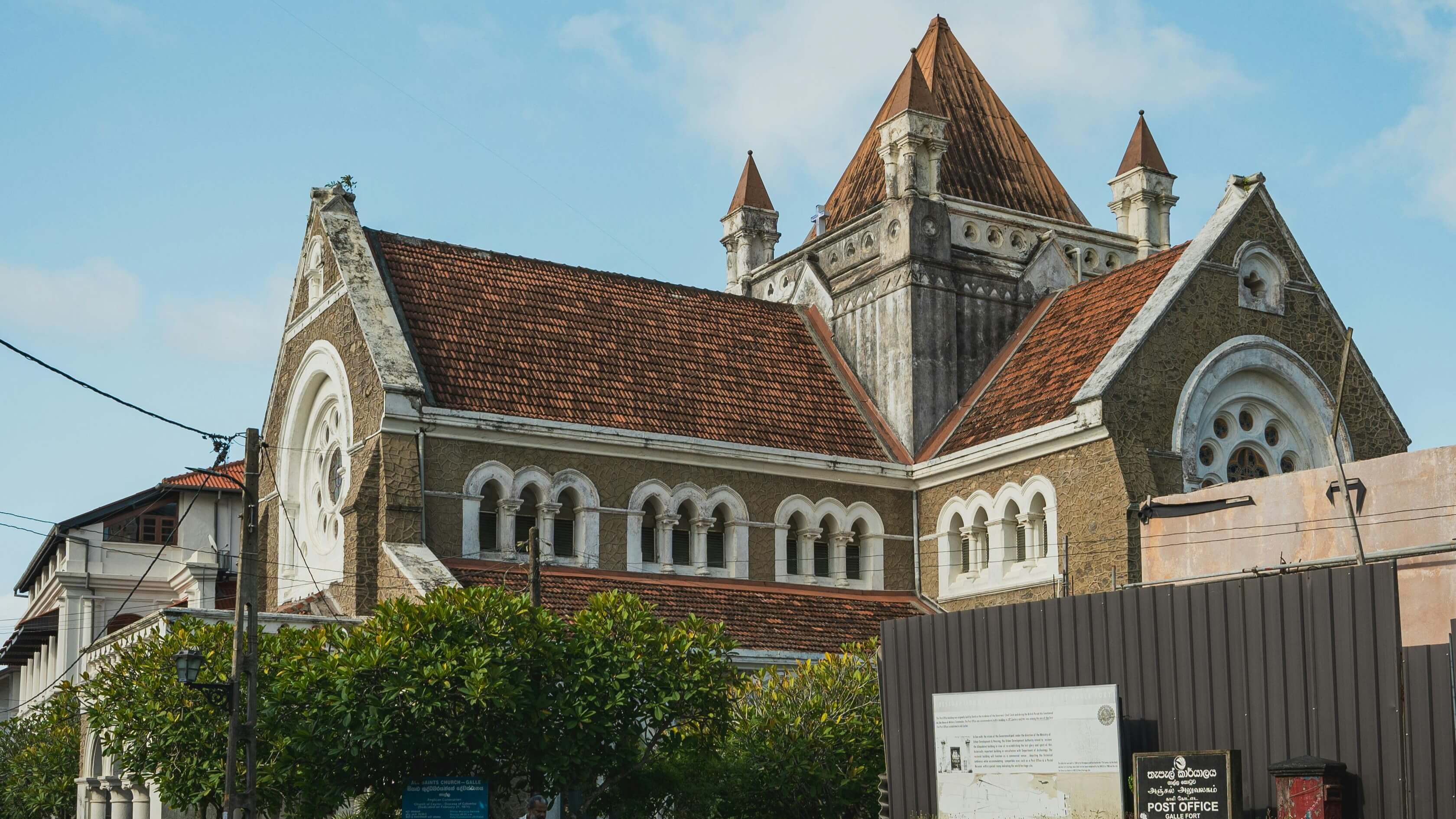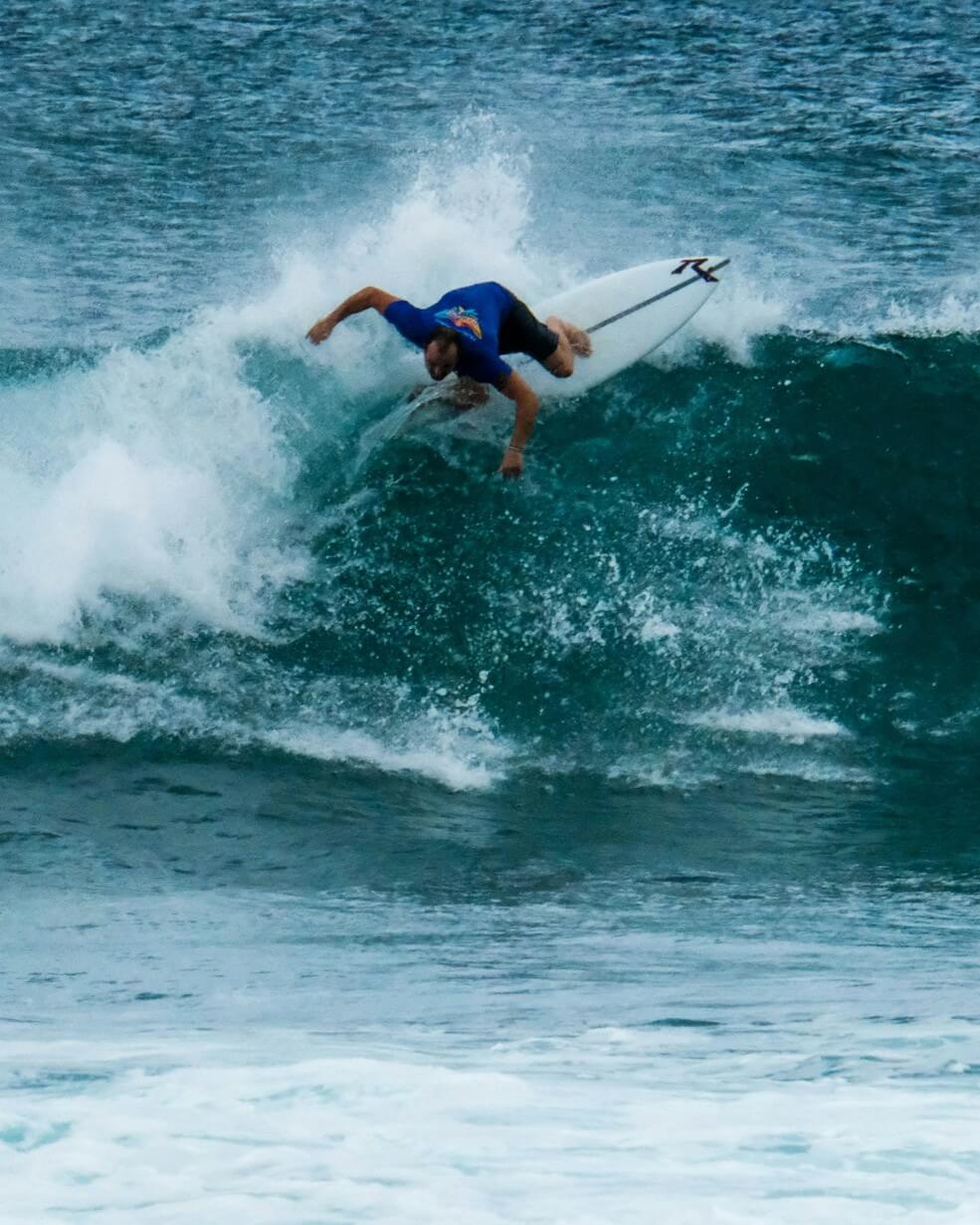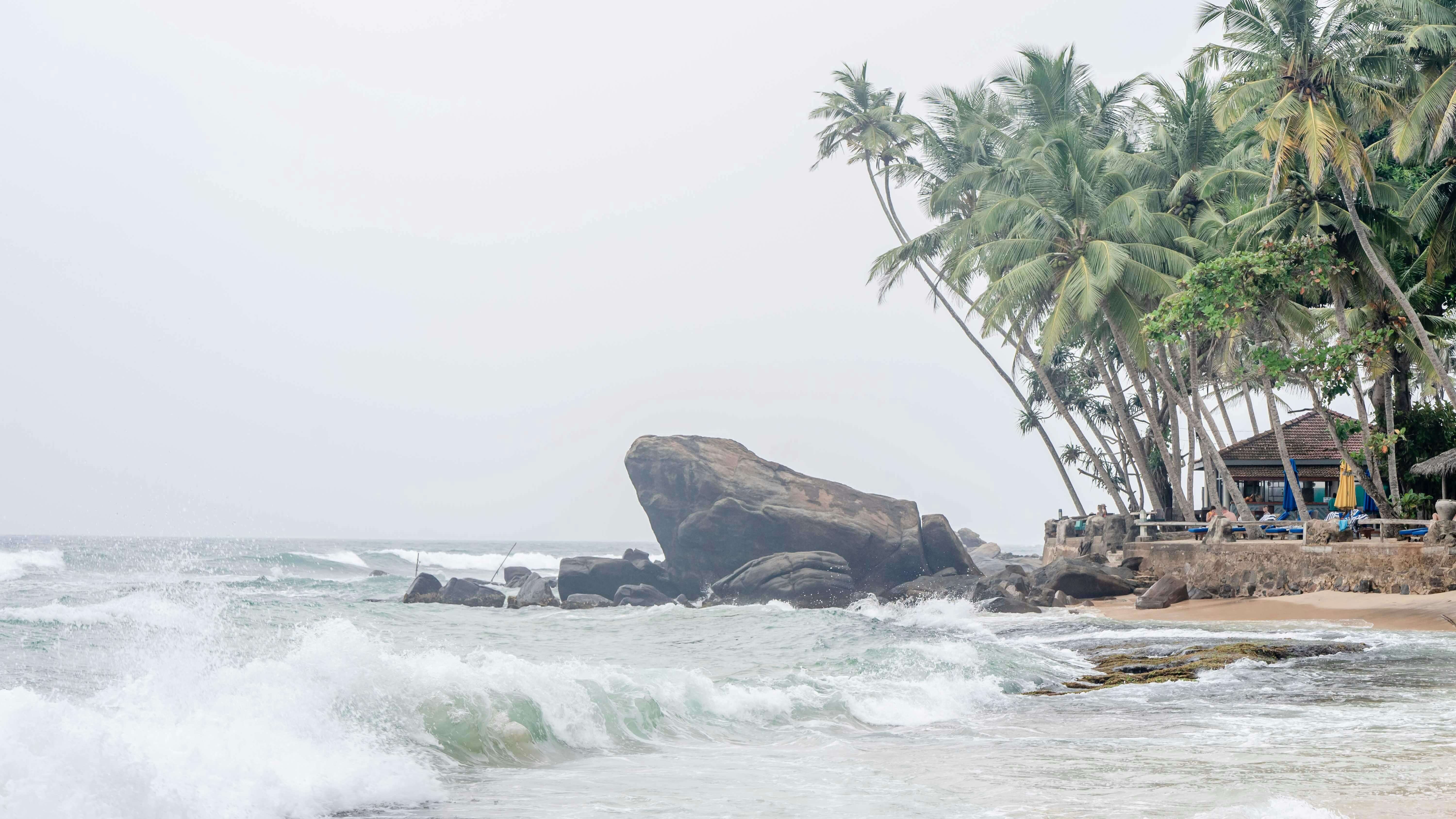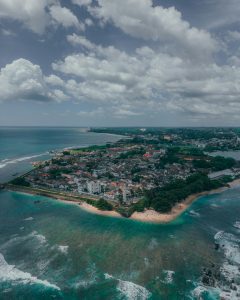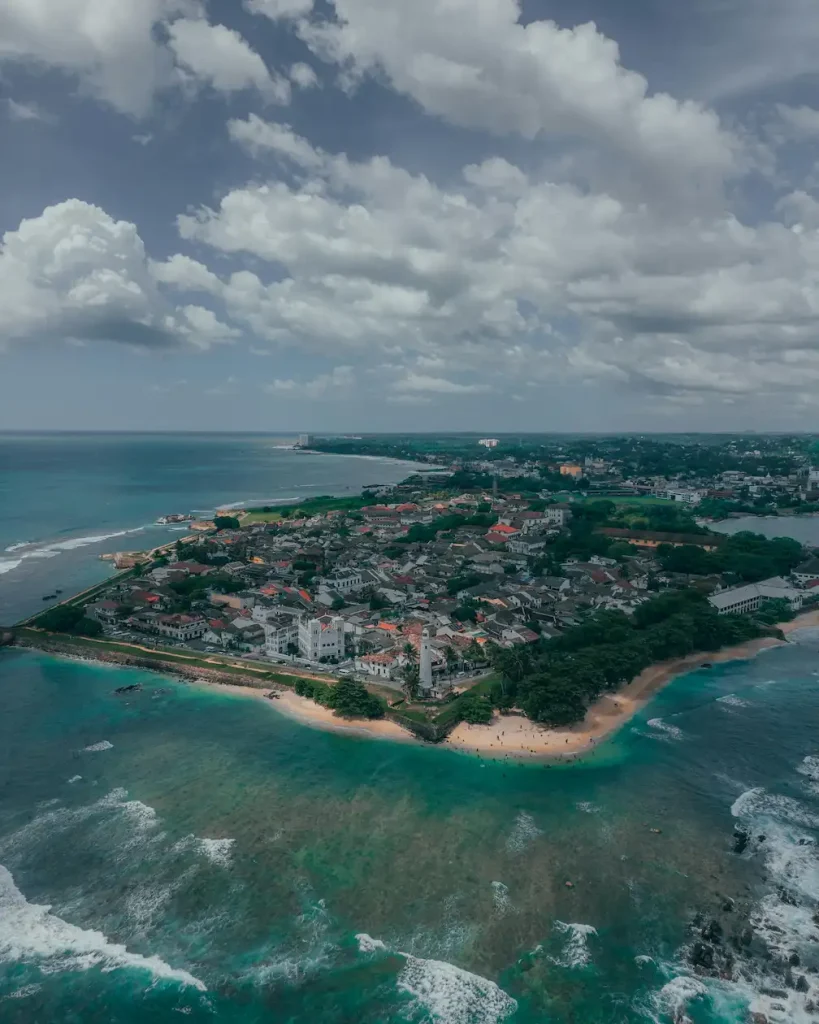
Down South Cities
Galle
🏝️ Coastal Charm & Pristine Beaches: Bask in the sun on Unawatuna Beach, Jungle Beach, and Dalawella Beach—perfect for swimming, snorkeling, and relaxation.
🕌 Colonial Heritage & Historic Landmarks: Walk through the UNESCO-listed Galle Fort, built by the Portuguese and fortified by the Dutch, showcasing stunning colonial architecture and cobblestone streets.
🐬 Marine Wonders: Explore vibrant coral reefs while snorkeling or diving, and spot turtles and marine life at Hikkaduwa and Unawatuna.
⚓ Rich Naval History: Visit the National Maritime Museum inside Galle Fort to learn about Sri Lanka’s seafaring legacy and shipwrecks.
🌅 Breathtaking Sunset Views: End your day with a stunning sunset over the fort’s ramparts, creating an unforgettable experience.
INTroduction
Galle, a city where history and coastal beauty intertwine, stands as one of Sri Lanka’s most captivating destinations. Located along the southern coast, this UNESCO World Heritage Site is renowned for its well-preserved colonial architecture, vibrant culture, and breathtaking seaside views. Galle has been a significant maritime hub for centuries, shaped by Portuguese, Dutch, and British influences that still echo through its cobbled streets and grand fortifications.
History, Nature and Cultural Heritage
At the heart of Galle’s charm is Galle Fort, a 17th-century Dutch stronghold that remains one of the best-preserved colonial fortifications in Asia. Enclosed by massive stone walls and bastions, the fort is home to a fascinating mix of European and South Asian architectural styles. As you wander through its narrow lanes, you’ll encounter charming boutiques, art galleries, and quaint cafés, each adding to the fort’s unique character.
Galle is also a city of cultural and religious significance. The Groote Kerk (Dutch Reformed Church) and Meeran Mosque reflect its diverse heritage, while the All Saints’ Church and various Buddhist temples showcase its spiritual harmony. The city’s traditions, from hand-crafted lace-making to storytelling through intricate wooden carvings, highlight its deep-rooted artistic legacy.
Beyond its historical allure, Galle’s coastal beauty is equally mesmerizing. The golden beaches of Unawatuna, Thalpe, and Jungle Beach offer serene escapes, while the iconic Galle Lighthouse provides panoramic views of the Indian Ocean. Whether you’re exploring ancient fortifications, relaxing by the sea, or immersing yourself in its colonial past, Galle remains an unforgettable destination that seamlessly blends history, culture, and natural splendor.
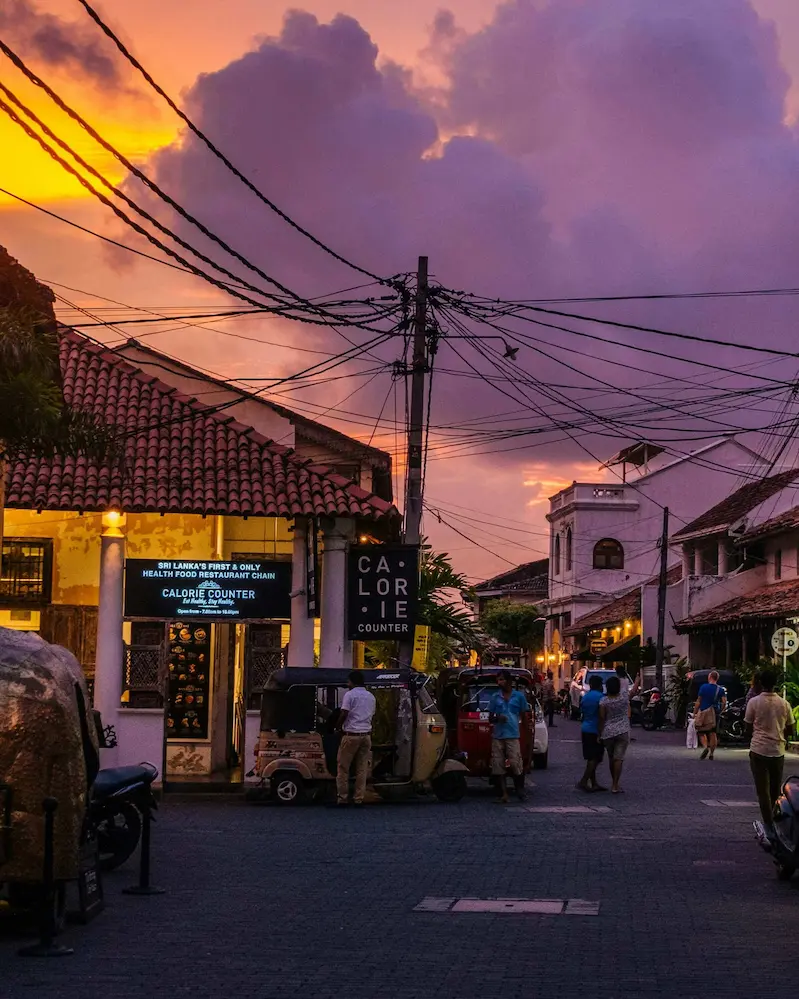
Things to Keep in Mind
Dress Code: If visiting religious sites such as temples or churches, wear modest clothing that covers shoulders and knees.
Footwear: Some religious and historical sites require removing shoes before entry. Carry a pair of socks for comfort on hot surfaces.
Timing: Visit Galle Fort early morning or late afternoon to avoid the midday heat and fully enjoy exploring the cobblestone streets.
Guides: Hiring a local guide can enrich your experience by providing historical insights into Galle Fort’s colonial past and hidden gems.
When Should You Visit Galle City?
Cultural and Festive Highlights
- Poya Days: On every full moon day, Galle’s temples come alive with Buddhist rituals, including meditation, prayers, and almsgiving. Expect a peaceful yet spiritually enriching experience.
- Christmas & New Year (December): Galle, with its colonial charm, hosts festive celebrations with beautifully lit streets, live music, and vibrant markets, attracting both locals and tourists.
Note: Visiting during festivals offers a rich cultural experience, but accommodations may be in high demand, so booking early is recommended
Best Time for Sightseeing and Beaches
Dry Season (November–April)
- The best time to explore Galle Fort and its beaches, with warm, sunny days and little rainfall.
- Ideal for activities like surfing, snorkeling, and whale watching in nearby Mirissa and Unawatuna.
- December to March offers peak travel conditions, perfect for walking tours and seaside dining.
Rainy Season (May–October)
- The southwest monsoon brings heavy rains, especially from May to August, leading to rough seas and occasional flooding.
- While the fort remains an all-year attraction, some beach activities may be limited.
- The upside? Fewer crowds, lush scenery, and off-season discounts on accommodation.
Getting to Galle: Travel Options and Tips
By Train
Galle is easily accessible by train, offering one of the most scenic coastal railway journeys in Sri Lanka.
- Southern Railway Line: Trains from Colombo Fort to Galle run daily, passing through picturesque coastal towns.
- Intercity Express & Coastal Line Trains: Options include first-class (air-conditioned), second-class (reserved/non-reserved), and budget-friendly third-class seats.
- Travel Duration: Colombo to Galle – Approximately 2.5 to 3 hours.
- Booking Tip: Reserve tickets in advance for first-class and second-class reserved seats via Sri Lanka Railways or online platforms.
By Bus
Regular buses operate between Galle and major cities, providing affordable and frequent transport options.
- Luxury and Semi-Luxury Buses: Air-conditioned private buses offer a more comfortable ride for long journeys.
- CTB Public Buses: Budget-friendly but often crowded, especially during peak hours.
- Travel Duration:
- Colombo to Galle: 2.5 to 3 hours via the Southern Expressway.
- Kandy to Galle: 5 to 6 hours via Colombo.
- Matara to Galle: 1 to 1.5 hours.
By Car or Taxi
Hiring a private car or taxi offers the fastest and most convenient way to reach Galle, especially for groups or families.
- From Colombo: 1.5 to 2 hours (126 km) via the Southern Expressway (E01).
- From Kandy: 4.5 to 5.5 hours (220 km), best via Colombo.
- From Mirissa/Matara: 1 to 1.5 hours along the scenic coastal road.
- Cost: Expect LKR 12,000–18,000 for a one-way trip from Colombo.
- Pro Tip: Use PickMe, Uber, or local cab services for affordable and reliable transport.
interactive MAP
Tips for Travelers
- Peak Travel Times: Weekends and public holidays can be busy with local tourists visiting for white-water rafting and adventure sports.
- Early Bookings: Reserve train or bus tickets in advance, especially for first-class train seats or luxury buses.
- Local Guide: Consider hiring a local guide for rafting, jungle trekking, and exploring hidden spots in Kitulgala.
Explore More Down South Cities!
Don’t stop at Galle—experience the sun-kissed beaches, rich history, and vibrant coastal charm of Sri Lanka’s Down South region. From stunning marine life to colonial heritage, every destination has something unique to offer.
Select Your Next City Now! 👉

